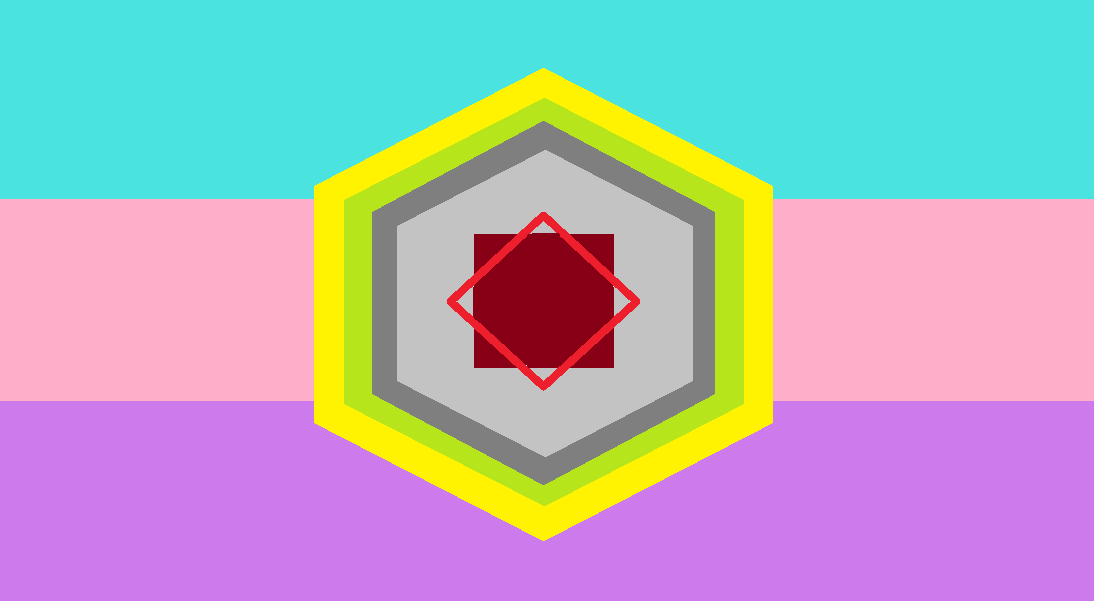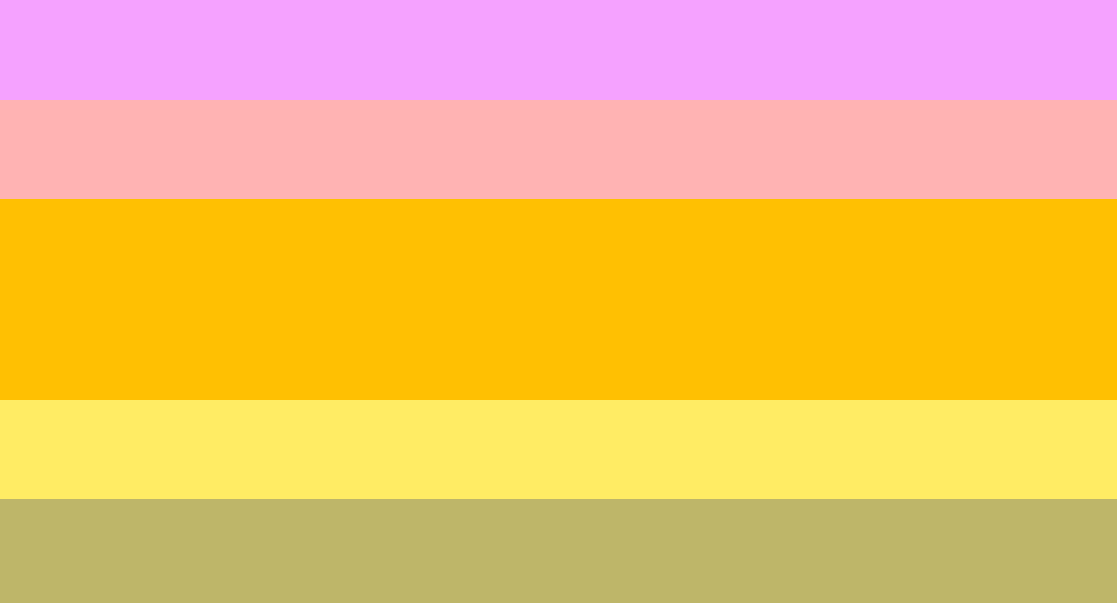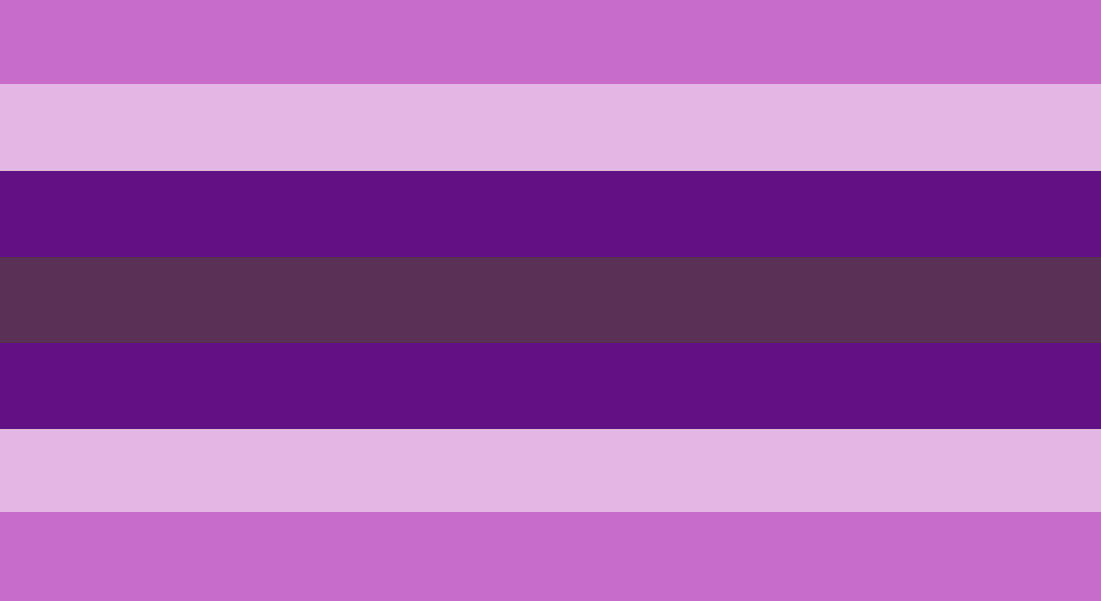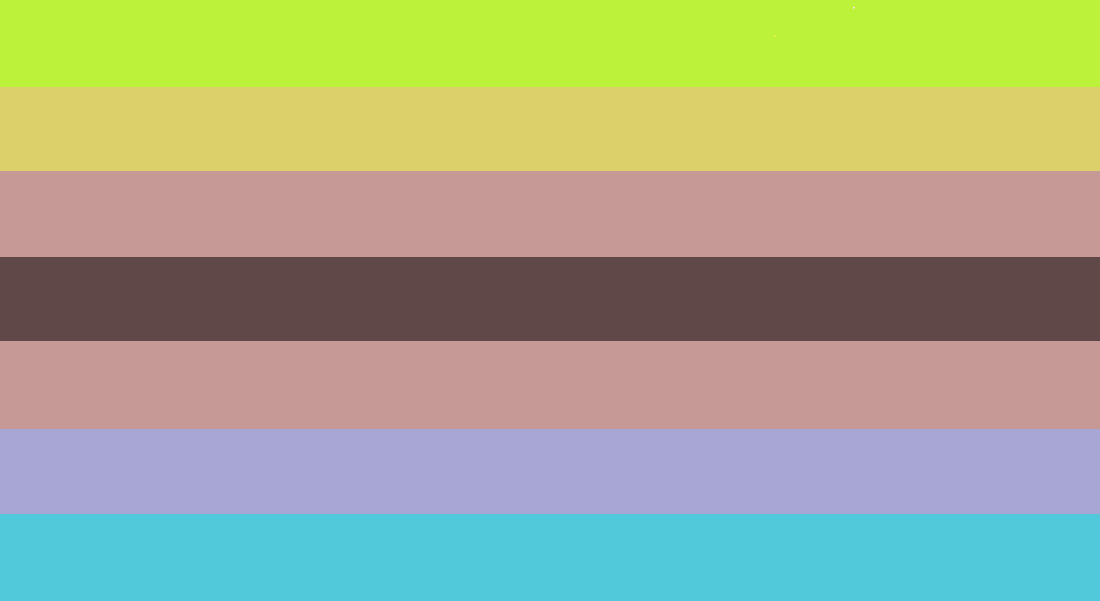Gender Creative: an umbrella term used to refer to individuals, generally youth, that expand notions of gender, expression and identity beyond what is perceived as the expected gender norms for their society and/or context.
Also called Gender Expansive.
Etymology
From English, literally meaning “an experience relating to or involving the imagination or original ideas”. The term was coined by Dr. Diane Ehrensaft, a developmental and clinical psychologist in the San Francisco Bay Area and the Director of Mental Health and founding member of the Child and Adolescent Gender Center in 2011.
Flag
There are two flags associated with the term gender creative.
[[[((((Suicide TW))))]]] The oldest flag I could find was created by Leslie Ellen Krause, tumblr user sorcerykid, in 2015. (Note: searching Leslie’s deadname, which will not be given here, reveals they are still alive.) Here’s the meaning they ascribe to the flag’s stripes and colors:
The pride flag is constructed of two exterior lavender stripes in opposition, a composite of the pink and blue stripes found in the transgender pride flag and an interior white stripe one-fifth the proportion to the remainder. The lavender stripes representing the blurring of binary gender roles and expectations whereas the white stripe represents the questioning of such social norms.
In addition to the above, Leslie posted the flag with a concise color meaning on each stripe. The top stripe represents those who are female-identified, the bottom stripe represents those who are male-identified, and the center white stripe represents freedressing. Freedressing was described by Leslie like so:
freedressing is the tacit acknowledgement that clothing is free of gender. In the broadest sense, it opposes the policing of masculine and feminine gender expression and the systematic indoctrination of binary gender roles and expectations. It subverts the stereotypes and defies the labels of Western fashion.
Note: Leslie is very open about their fetishism in adult online spaces, which will not be linked to here, stating they are interested in ageplay, as well as a leggings and panty fetishism. Since the term gender creative is most often used to refer to children and young adolescents, I did not feel it was appropriate or in good taste to use Leslie’s flag for this post, even though it was the first-known flag for the term. This note serves to inform those who may not be comfortable using their flag to represent themselves upon learning this information, for any reason.
A second gender creative flag, featured above in this post, was created by a LGBTA Wikia user going by “Willow” in 2020, however, the individual that created and added it to the page is user cryptocrew. The flag consists of three horizontal lines, that, from top to bottom, are blue, pink and purple. In the center are four hexagons nested within each other that are yellow, green, dark grey and light grey, respectively. In the center of the hexagons are a rhombus, and finally, a square, which are light red and dark red, respectively. In the words of “Willow”:
The light blue, pink, and purple represents children/youth and gender roles/the gender binary, yellow represents genders outside the binary, green represents unique genders, dark grey represents being void of gender, light grey represents fluidity, and the red boxes represent leaving the box/thinking outside the box.
The original image of the flag is small and pixelated, so I created a high-quality version that is being used in this post. Enjoy!









